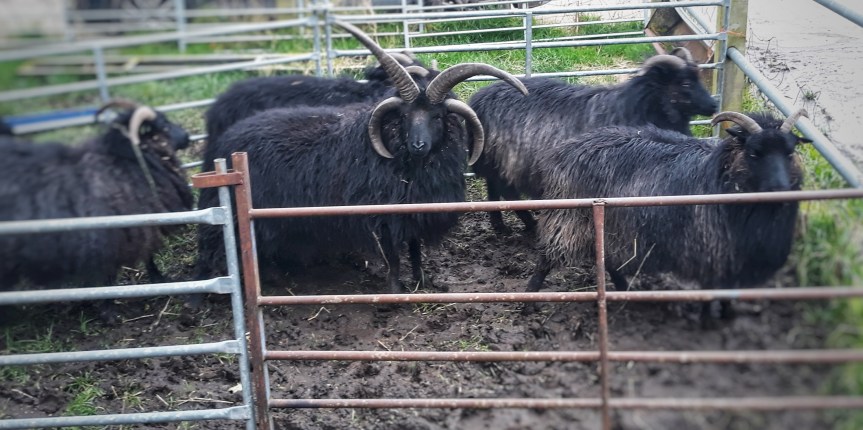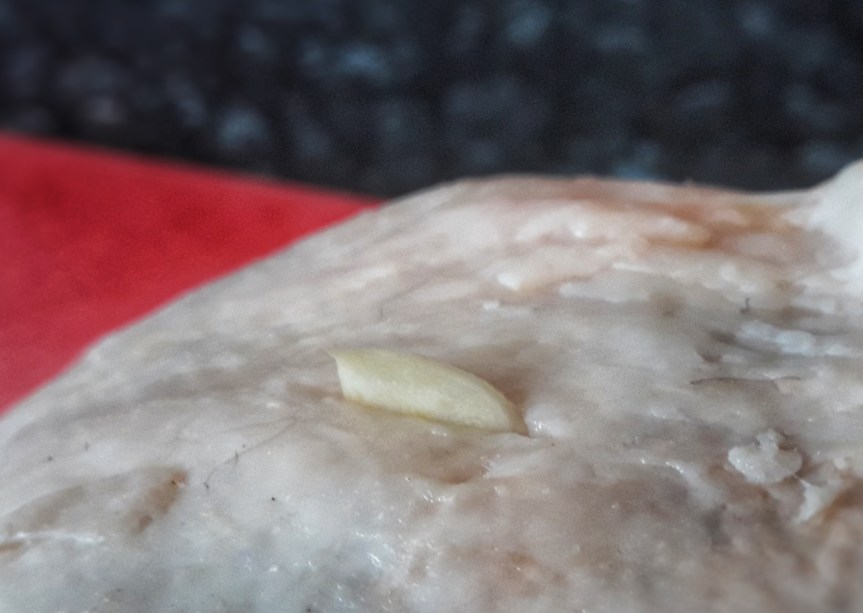‘Why’, you may think ‘has this relatively straight-forward recipe taken me so long to get around to?’ The answer is very simple and is two-fold: it doesn’t sound that nice and it’s quite expensive to make. However, in this time of lockdown, I realised that I could buy all the ingredients for it quite easily from a local fishmonger whilst out doing my appropriately socially-distanced weekly shop, and so as a bit of procrastination I made it. The recipe is essentially smoked salmon with crème fraiche and salmon roe. It sounds very 1970s, though it may not be as old as that.
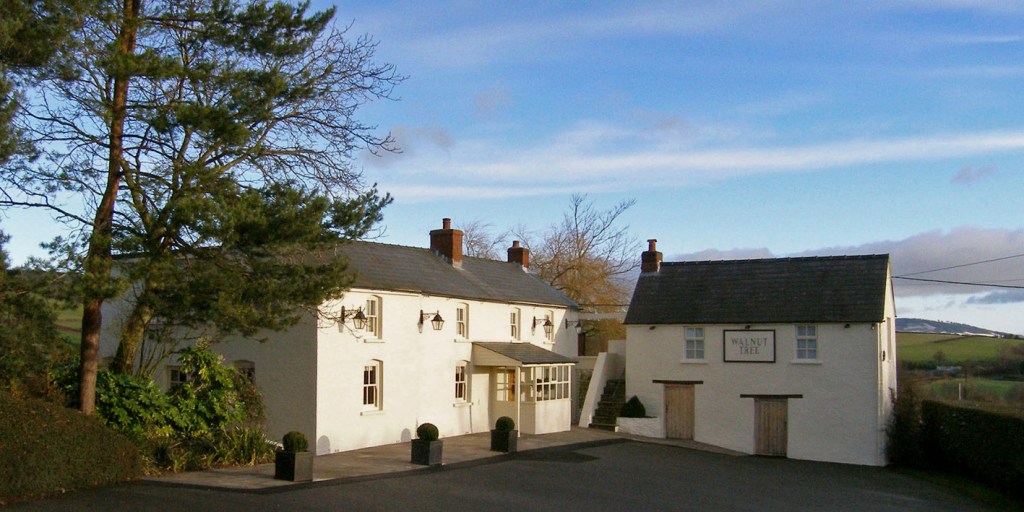
The recipe comes from Franco Taruschino who, at the time English Food was published, was chef at the Walnut Tree Inn at Llandewi Skirrid near Abergavenny. The place is described by Jane as “one of the nicest places to visit in the British Isles.” Today the kitchen’s head chef is the Michelin-starred Shaun Hill, another favourite of Jane’s who appears several times in English Food as well as her other tomes. In fact, he was one of the guests on the episode of the BBC’s Food Programme about Jane Grigson that Yours Truly also appeared in. Link to part 1 here and part 2 here.
This recipe serves ten, but it can be easily adapted to serve more or fewer people, which is lucky for me in these days of lockdown, as there was obviously no way I was going to be serving that many. The recipe below uses 1 ½ pounds of smoked salmon for 10 servings. I could only get hold of small packs and managed to get a third of what was required, enough to line 4 small ramekins. Anyway, multiply up or divide down as appropriate for you:
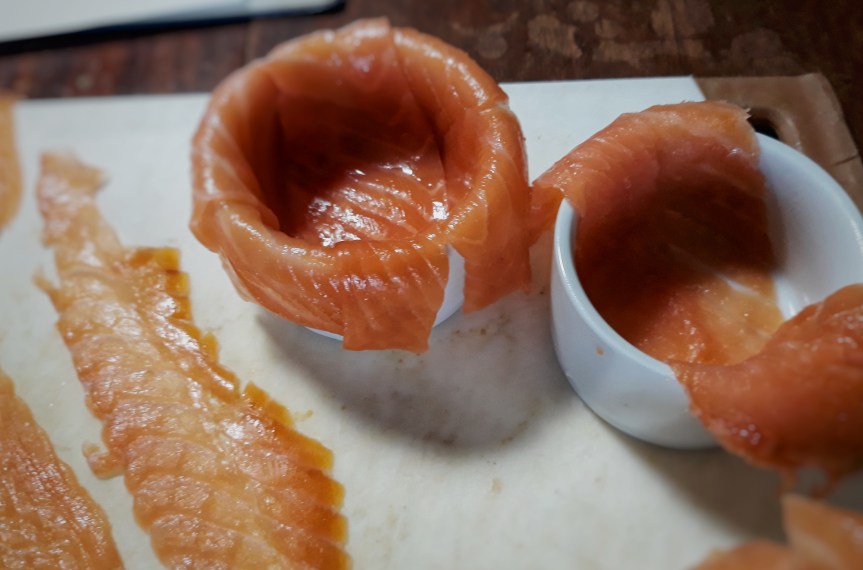
Swirl out your ramekins with water and line them with strips of salmon, making sure there is a little overhanging. Take any trimmings and place in a blender with 8 fluid ounces of crème fraiche (or half and half double and soured cream). Season with ½ teaspoon of Cayenne pepper and the juice of half a lemon. This stage was a disaster for me – because shelves were pretty bare, I could only get low fat crème fraiche (a very First World problem, I do realise) and so the whole thing was reduce to a thin liquid; blending had done away with the artificial structure given to it in the form of pectin or whatever. I attempted to remedy this by adding a couple of leaves of gelatine dissolved in a little boiling water to it, which I just got away with.

Fold through this mixture, 8 teaspoons of salted red salmon roe (or indeed any roe). Spoon into the lined ramekins, lay over the overhanging salmon, cover with cling film and place in the fridge to set (in my case overnight because of the gelatine).
Meanwhile, get on with the tomato sauce. Finely chop enough shallot to yield 2 tablespoons and fry it until golden in a little olive oil, then add 2 pounds of tomatoes that have been skinned, seeded and chopped*. Fry until the tomatoes turn pulpy, then season with salt, pepper and a teaspoon of red wine vinegar. Pass through a sieve to make a smooth sauce – you can use a hand blender first if your tomatoes do not seem pulpy enough to pass through one. Check for seasoning, remembering it will need to be slightly over-seasoned as it is served chilled. Place this in the fridge to cool down.
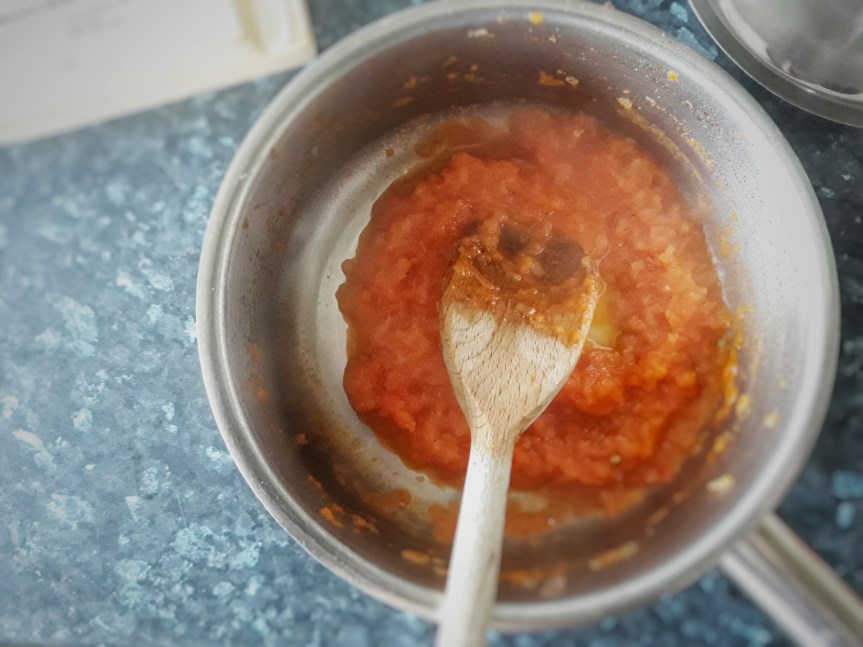
When ready to serve, place a couple of tablespoons of the sauce in centre of ten serving plates and gingerly release each bavarois from its ramekin onto your hand. A small palette knife came in very handy here, and it wasn’t too tricky: just don’t get hasty and shake the ramekin unless you want disaster to strike; the best things (and sometimes the worst, it seems) come to those who wait.
Place a bavarois in the centre of each circle, and scatter over some finely chopped chives to garnish.

#439 Bavarois of Smoked Salmon. This recipe seems so outdated now. I suppose it is no surprise that it is the contemporary recipes that have aged more quickly that the traditional or historical ones. Anyway, this was less horrible as expected and it all got eaten, but for the poor return it was a lot of faff and expense. Give me some good cold-smoked fish, some butter, brown bread and a wedge of lemon or blob of horseradish sauce any day of the week. Not one of her worst, but not good enough to even be average either: 3/10
*to do this, cut a cross on the underside of each tomato, place in a jug or bowl and pour over boiling water to cover. Leave for 2 minutes, then fish out with a slotted spoon. The skin will come away from the flesh relatively easy if you use a good paring knife to aid you. Once removed, they can be halved and the watery centres and seeds scooped out and discarded (or popped into the vegetable trimmings stock bag in the freezer).

